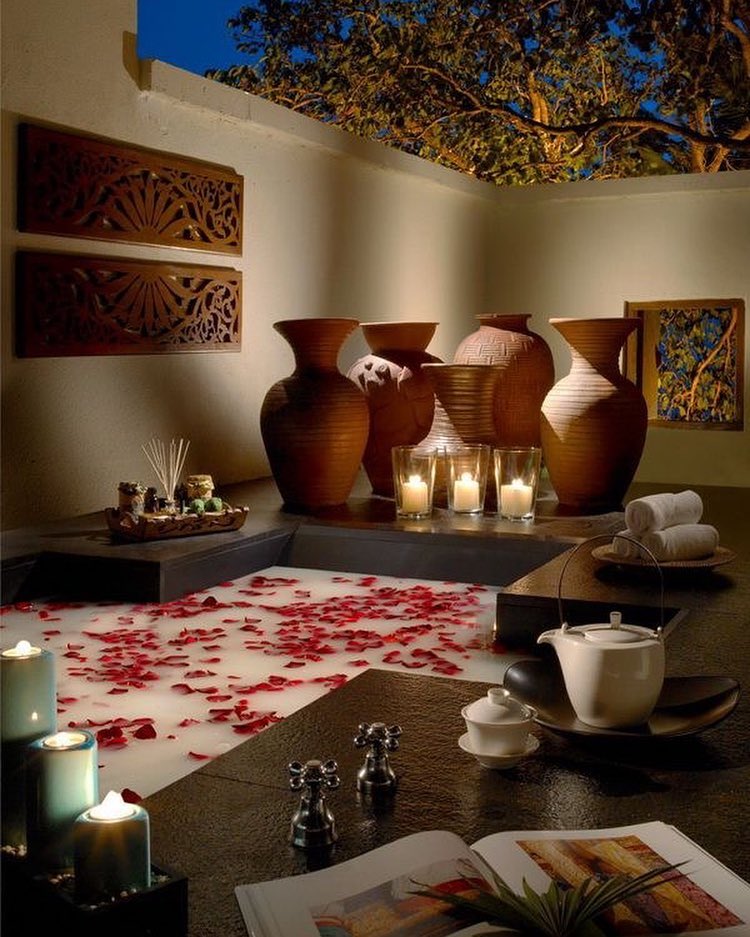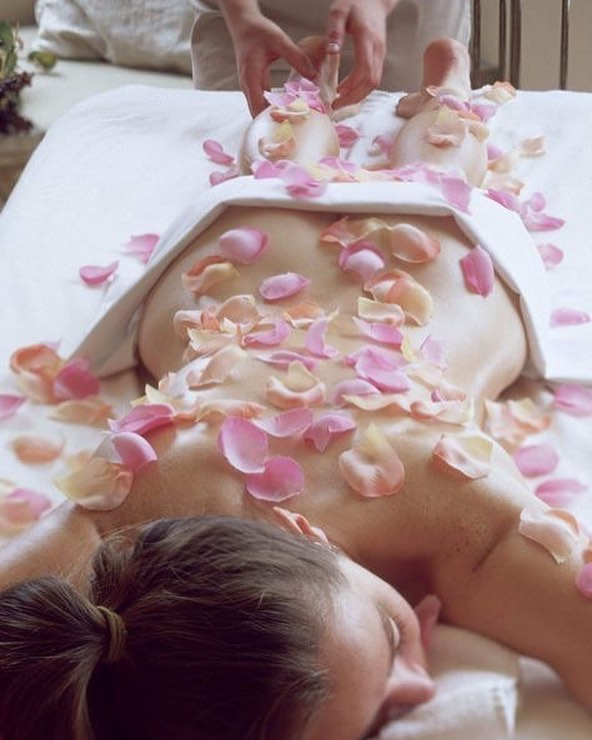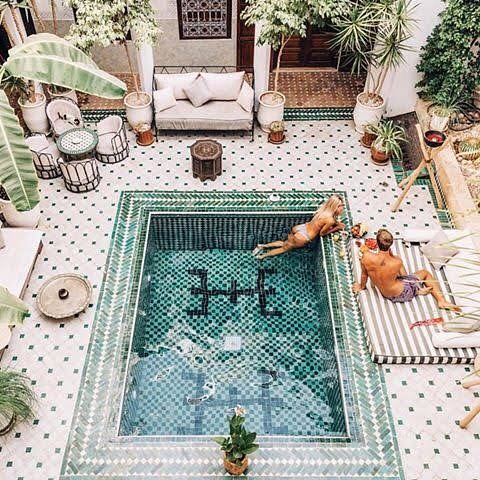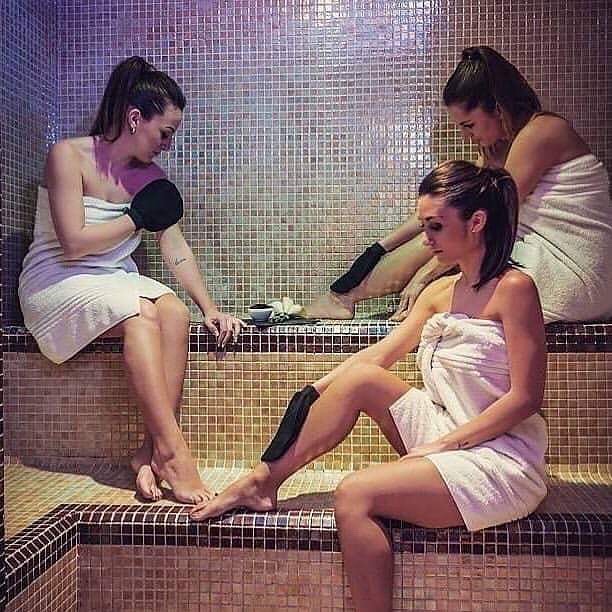What should I expect on my visit to a Moroccan hammam?
A visit to a Moroccan hammam (Arabic bath) is a different, wonderful experience and it is also one of the best ways to connect with Moroccan society. So if you are planning to visit Morocco and you have doubts, don’t think about it and don’t miss a cleansing and cultural experience very different from what we are used to. In this post, we will talk a little about this type of bath, how they work and where you can find them.
Where to find a hammam?
You can find public Moroccan hammam in almost every city in Morocco and in every neighborhood. To find them you can get advice from the receptionist of your riad or hotel who will surely know where to find a local hammam with the quality requirements you want. Cab drivers, waiters, and people on the street will also be happy to give you directions.
The larger hammams have separate bathing rooms (and entrances) for men and women, others however serve exclusively one sex or the other. There are others that choose to set days of the week for men, and others for women, or certain days for each of the sexes. If you are looking for a “mixed” public Hammam, you should know that this option is not for you. You should consider the private Hammams in hotels.
What to take to a hammam?

A large number of luxury hotels and riads offer private hammams to their guests. Some also allow you to use them without being a guest. While these private hammams tend to be more luxurious and more exquisitely decorated, they also tend to be much more expensive than public baths. Some hotels and riads allow people of both sexes to use the baths together. We advise you to ask about this before booking.
Many Moroccans bring the following personal hygiene items to the bathrooms:
- soap,
- shampoo,
- exfoliating glove,
- towel,
- small plastic jug-style bucket for pouring water over your body,
- bathing suit or extra underwear
- shaving cream and razor.
Hammams often sell travel-size bottles of shampoo and soap. We advise you to buy and carry “Sabon beldi,” a unique black olive oil soap. It is easily and cheaply found in the souks. Ask if they sell “ghasoul” or “rhassoul”, a clay used to wash the skin.
The KIIS (exfoliating glove): Used in the bathing process which focuses on scrubbing the body and back with this exfoliating glove, you can be helped by the hammam worker or a friend – it all depends on whether you have a friend who rubs your back (in this culture everyone rubs each other’s back in the baths – this is a cultural thing that would normally be out of place in western culture). The “KIIS” costs around 10 to 15 dirham and can be bought in the souks as well as the small plastic buckets. Both cost no more than about 10 dirhams. Sabon beldi and rhassoul are also widely available in the stores.
Towels can also be rented for a few dirhams at the reception.
When entering a hammam you pay the man at the reception the registration fee and then you must continue to the changing rooms. Here, you change clothes, for a bathing one. There are usually no lockers, but the staff usually keep an eye on your belongings. It is very rare for clothes or shoes to be stolen from a hammam, but logically you should not bring valuables into a hammam.
The changing room often functions as a resting and gathering place for people to finish their bath. A lot of steam baths serve coffee or tea in this room. So, while changing you will be surrounded by other guests. Be careful and put a towel around your waist while changing because total nudity is offensive.
Beyond the changing rooms are three areas separated by walls and connected by small openings in the walls. The first room is cold, the second room is warm and the third room is very hot.
The hammam ritual
After changing, the usual bathing process is as follows:
- (1) Hot room.
- This is where you start to get your body used to the warmth of the bath. You should fill two of the many large buckets available, one with cold water and one with warm water. Use some water to clean the floor of the space where you are going to sit. Then wash it the first time, but only superficially to remove dirt from your skin and hair.
- (2) Hot room
- The heat in the hot room allows the skin to sweat and the pores to open. This expels all the dirt hiding in your pores and works wonders on the skin. How long should you stay in this room? Well, it depends on your tolerance to heat. You can pour buckets of water on yourself to cool off from time to time, although most Moroccans leave their buckets in the hot room.
- (3) Hot room
- You return to the hot room at the beginning for a deeper wash. This is when you use soap and rinse with water from one of your buckets. Here it is totally normal for a fellow batchmate to offer to scrub your back. This is a sign of courtesy and should not be misunderstood.
- After washing your skin and hair, you use the water from the second bucket to rinse off the soap and dirt.
- When you finish bathing, carefully empty the remaining water from your buckets down the walls of the hot room.
- (4) Cold room
- After bathing, you enter the cold room. Many Turks have communal showers in this room, where you rinse the last traces of dirt and sweat from your body. There are also benches, where you can relax for a while and let your body get used to the normal temperature again.
Hammam Rules
There are a couple of things you can do that may be offensive in a hammam. Spilling water is one of them. Water is scarce in Morocco and wasting it in large quantities is considered reckless and rude. Use only as much water as you need for washing and rinsing.
Even more serious is to walk around completely naked in a Hamman. There are no exceptions in men’s bathhouses, but it is true that there are some women’s Hammans where some women go completely naked. Even so, women tourists should only undress when they see Moroccan women doing so. As a general rule keep your panties on! (Don’t forget to bring another dry one to change afterward).
Although hammams are used to maintain hygiene, they also have an important social function. This is especially true of the more “traditional” women, who rarely leave their homes except for the hammam visit. People love to chat in hammams, discussing the latest news and gossip.
As a tourist, it can be quite an event in a public hammam. You will probably be quite an attraction in the bath. Enjoy your special status – a hammam is a great place to meet Moroccans. Don’t be surprised if you are invited for a drink or dinner.
How much does a hammam cost?
A bath in normal public hammam costs around 5 to 10 dirham. Towels, soap, and other toiletries are available for a couple of dirhams.
If you take a massage from one of the staff in a public hammam, a tip of at least 10 or 15 dirhams is expected.
When leaving the bath it is customary to tip the front desk attendant one or two dirhams. Hammams in hotels and riads usually cost 300 to 500 dirhams. For a massage here, don’t expect to get it for less than a few hundred dirhams.
Luxury Moroccan hammam or Spa

If you do not dare to immerse yourself in the world of a traditional Moroccan hammam, then investigate the private hammams in hotels, riads, and spas.
You may be interested in: Get to know these spas in Morocco: natural and spa.
In Fez, there are a number of high-end hammams.
The Nausikaa wellness center can be found on Bahnini Avenue – Ain Smen Street, in Fez. There is a separate hammam for men, hairdresser, make-up room, many different types of oils, seaweed, and other therapies provided by French-trained staff, as well as a fully equipped modern gym with personal trainers. Tel: (212) 035 61 00 06 (212) 035 61 00 16 e-mail: [email protected]
Riad Laaroussa – Spa Laaroussa An authentic private hammam with traditional massage in the heart of the Medina of Fez. Email:[email protected] Tel: +212 (0) 6 74 18 76 39 Website: http://www.spalaaroussafez.com/
Riad Rcif – Open to guests and non-guests. With all kinds of treatments based on natural products.
Tel: 00 212 (0) 5 35 740037 E mail: [email protected]
Palais Amani – Another luxurious hammam with some interesting products, including a foot and hand bath with sea salt crystals. Foot massage, Black soap with argan oil and wild mint, and full-body clay masks.
12 Derb el Mitre, Email: [email protected] Phone 212 535 63 32 09
Marrakech

Moroccan hammam in Marrakech, there are dozens of fine spas and Hammans. A good example is the Riad Zamzam Spa which in addition to the hammam offers acupuncture, hot stone therapy, and reflexology. All spa products are locally sourced or manufactured. Most are organic, made using ancient recipes dictated by elders. Phone: 212 661 215 062 E-mail: [email protected] Website: riad zamzam
Contact us to Book Moroccan hammam

Leave a Reply